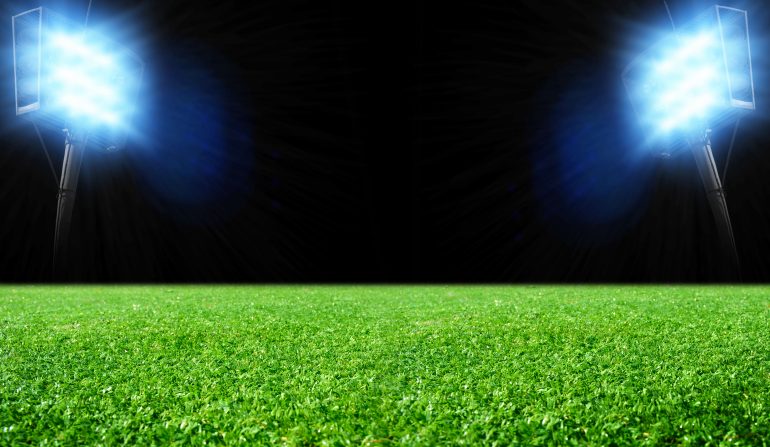
Over the past few months I’ve read a lot of articles discussing the Seahawks’ performance in the red zone in 2014. Unfortunately, almost all of those articles seem to content themselves with regurgitating the same two vague points: 1) the Hawks were bad in that part of the field because ______ (rarely did they bother to fill in that blank), and 2) the addition of Jimmy Graham will help them be not-bad there because, uh, just because. And that’s pretty much it. No explanations given, zero stats provided as evidence, and precious little of interest to say on the subject. I’m hopeful this article will fix at least two of those omissions.
First off, it helps to know exactly what the red zone is and what its limitations are. The term rose to popularity back in 1982 after then-Washington head coach Joe Gibbs used it in a Washington Post interview to describe the area between your opponent’s twenty yard line and their goal line. As the thinking went, once you cross over into this red zone you’re in great position to score, and good offenses visit it a lot and convert a high percentage of those visits into points.
Using the twenty as the cutoff point may seem arbitrary1, but there’s a reason Gibbs chose it. You see, placekickers back then were not terribly dependable at long range. From 1981 to 1990, kickers scored on a respectable 76.14% of their field goal tries from 30-39 yards (for reference, snapping the ball at the twenty would result in an attempt of about 37 yards), but from 40-49 yards they only connected 57.21% of the time and from 50+ yards their success rate plummeted to 36.43%.
In the decades since, NFL kickers have dramatically improved their conversion rate on long field goal attempts. Through the first four years of the current decade, kickers have made 89.04% of their attempts from 30-39 yards, 78.22% from 40-49 yards, and 63.27% from 50+. Because of that, the effective scoring range of kickers today is considered to start at around the 35 yard line rather than the 20. There doesn’t seem to be any consensus yet on what the name for this additional 15 yard zone should be, but I like to call it the extended red zone, or ERZ for short, so that’s the term I’ll be using2.
It should be noted that the drives we’re talking about here represent just a fraction of a given team’s total offensive efforts, but it’s a pretty damned important fraction. Last season, only two-fifths (39.83%) of all offensive drives ended somewhere past their opponent’s 35, but a whopping 91.33% of all offensive scoring plays occurred on those few possessions.
So, instead of settling for Gibbs’ antiquated red zone definition, here’s a quick & dirty three-part test I’ve been toying with for gauging a team’s relative offensive scoring efficiency:
1) On what percentage of its drives did the offense succeed in putting itself in scoring range (i.e. inside their opponent’s 35)?
2) Once within scoring range, what percentage of the time did the offense take advantage of the opportunity and put points on the board?
3) Finally, when the offense did score, what percentage of the time did they score touchdowns instead of settling for field goals? (Note: I’m not sure how happy I am with this last one – I’d rate it the least important of the three.)
If nothing else, using these three numbers together seems to cut down on the false positives the old red zone stat produces. Take the 2014 Raiders, for example. According to the way Joe Gibbs would have calculated it, Oakland had the fifth-best red zone offense in the NFL last year, with 93.10% of its red zone trips ending in scores. They didn’t show up quite so well on the my test, ranking dead last in total drives ending inside the thirty-five (25.51%), 18th in red zone & ERZ trips converted into scores (80.00%), and 14th in scoring TDs versus FGs (55.00%) – not exactly top five material there.
The Bears are another interesting test case. They were 1st in the NFL in scoring TDs versus FGs (75.00%), but ranked just 20th in total drives inside the 35 (38.51%) and a lowly 30th in scoring opportunities converted into points (71.64%). On its own that first stat sounds pretty good, but when it’s examined next to the other two it’s easily identifiable for the false positive that it is.
Anyway, enough with the background and the droning on – how did the Seahawks do? (Hint: a hell of a lot better than the Raiders or Bears.) For the 2014 season, the Hawks’ offense ranked 5th in total drives ending inside the 35 (47.59%) and 9th in scoring opportunities converted into points (83.54%), but only 16th in scoring touchdowns versus field goals (54.55%). If nothing else, those numbers back up the impression I had of the offense last year: good at getting into position and putting points on the board once there, but not as adept at punching it in for the full six.
I’m relatively sure it was the team’s tendency to settle for field goals instead of touchdowns that all those other articles were trying to talk about when they brought up the Seahawks’ red zone troubles, but using that particular stat all by itself gives an unfairly negative impression of their offense. Adding in the other two stats paints a more complete picture, one of a solid offense that could be a great one if they can just figure out how to finish off more of their scoring drives with TDs.
As for the second point those articles were making, none of the above stats can tell us whether Jimmy Graham will be the one to solve that problem for Seattle, but adding him to the mix certainly couldn’t hurt. Since Graham entered the league in 2010, only Rob Gronkowski and Dez Bryant have caught more touchdown passes than him inside the 35 yard line, and nobody has caught more TDs than him at short range (i.e. inside the 10 yard line). Here’s hoping he brought some of that production with him when he moved to the Pacific Northwest.
1 To a certain extent the twenty is arbitrary. Several stats articles written over the past few years at Football Outsiders and elsewhere have rightly pointed out there’s little to no statistical difference between the importance of plays that started at the twenty yard line and, say, plays that started at the nineteen or the twenty-one. That said, if you’re going to do statistical analysis, you have to stop including data somewhere, and the twenty is as good a place as any to draw an imaginary line.
For the purposes of this article, I also only tallied drives that ended one way or another inside the red zone or ERZ, so the data used here doesn’t include drives that entered one or both zones, only to get pushed back out by things like penalties and sacks. I’d like to try including them in my calculations at some point, but as of yet there’s no easy way to sort through the play-by-play data to find and identify those particular drives. I have to sleep sometime, you know.
2 One term I’ve seen used in a few articles now is “orange zone,” but that is a terrible, terrible name. I spent a large part of my childhood watching the Seahawks get hammered by Elway’s Broncos, so I have a strong negative reaction to that particular color.

